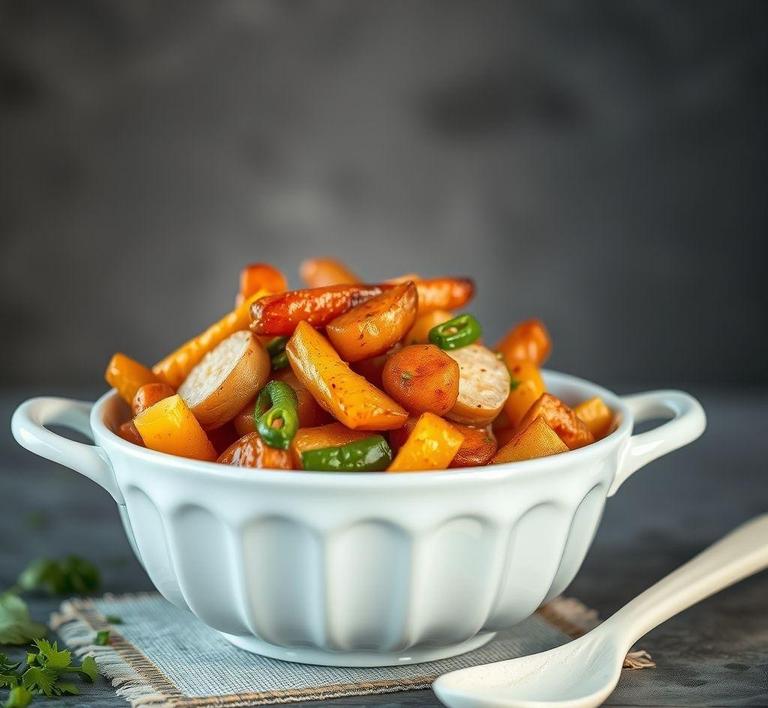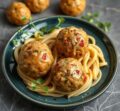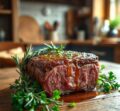When it comes to refreezing cooked food, many people wonder whether it’s safe or not. The good news is that, in most cases, it’s perfectly fine to refreeze cooked food as long as it’s been handled properly. However, there are some important factors to consider, like how the food was stored, the temperature it reached, and how long it’s been sitting out. Knowing the right techniques for safely refreezing your meals can help preserve both their quality and safety. In this guide, we’ll walk you through everything you need to know about refreezing cooked food so you can enjoy your leftovers without worry!
Can You Refreeze Cooked Food?

Refreezing cooked food is a topic that often sparks confusion and debate in kitchens worldwide. In general, the answer is yes, you can refreeze cooked food-but with several important caveats. The first thing to understand is that it’s not about whether it’s possible to refreeze, but rather how you do it and what effect it might have on the food’s safety and quality.
When you freeze food, the low temperatures slow down the growth of bacteria and other microorganisms that cause food spoilage. However, once food is thawed, the bacteria can start multiplying again, and this is where the risk comes in. The safety of refreezing cooked food largely depends on how it was thawed and handled during the process. If you thaw food properly in the fridge and ensure that it hasn’t been left at room temperature for extended periods, it should be safe to refreeze. However, refreezing raw food that has been thawed outside of the fridge, like in a warm kitchen, could increase the risk of bacterial growth, and thus, health concerns.
The key point to remember is that while refreezing cooked food is safe if handled properly, it should never be done more than once. This ensures that bacteria don’t have the chance to proliferate and that the food retains its nutritional integrity.
How To Refreeze Cooked Food?
Refreezing cooked food requires careful attention to how it’s thawed and how it’s stored. There are a few steps to ensure you’re doing it in a way that’s both safe and preserves as much of the quality as possible.
1. Thaw Properly
The first step is ensuring that the food is thawed in the safest way possible. The safest method is to thaw it in the refrigerator, as the low temperature will keep the food out of the ‘danger zone’ (40-140°F or 4-60°C) where bacteria grow most quickly. If you need to speed up the process, you can thaw it in the microwave, but you should immediately refreeze the food after that if you intend to refreeze it. Never thaw cooked food on the counter at room temperature, as this gives bacteria the perfect environment to thrive.
2. Cool Quickly
Before refreezing cooked food, make sure it has cooled down properly. Never refreeze food that’s still hot. Hot food will increase the temperature of the freezer, which could cause other foods in the freezer to thaw and refreeze, leading to a loss in their quality. The best practice is to allow the food to cool down to room temperature first, then refrigerate it before you freeze it again.
3. Use Airtight Containers
When refreezing cooked food, storage is crucial. Using airtight containers or heavy-duty freezer bags will prevent air from entering, reducing the risk of freezer burn. Freezer burn occurs when food is exposed to air and can affect both the texture and taste of the food. Additionally, it’s a good idea to label the containers with the date of both the initial cooking and the refreezing to keep track of how long it’s been stored.
4. Don’t Refreeze In Portions Larger Than You Need
If you anticipate using only a portion of the refrozen food later, consider dividing the food into smaller portions before freezing it again. This way, you’ll only have to thaw what you need and won’t be forced to refreeze it multiple times.
5. Consider The Type Of Food
Some foods freeze better than others, and they will withstand the process of refreezing better. For instance, meats like beef, pork, or chicken often fare well with refreezing, though the texture can suffer. On the other hand, foods that are more delicate, like rice, pasta, and certain vegetables, might not hold up as well. When refreezing these foods, you might notice a reduction in their texture or flavor after the second freeze.
Quality Impact
While it is safe to refreeze cooked food if done correctly, the quality of the food will inevitably suffer. Several factors contribute to this decline in quality.
1. Texture Changes
One of the most noticeable changes is in the texture of the food. Freezing and thawing cause the water in the food to form ice crystals. These crystals can rupture the cells of the food, leading to a mushy or soggy texture once it’s thawed again. Foods with high moisture content, such as vegetables or stews, are particularly susceptible to this.
2. Flavor Deterioration
The flavor of the food may also change after being refrozen. This is especially true for foods with high-fat content, like meats or creamy sauces. The freezing process can cause fat to separate or oxidize, which can lead to a stale or off taste when the food is eventually reheated. The loss of flavor is often compounded by the length of time the food spends in the freezer.
3. Nutritional Loss
The process of freezing and thawing doesn’t just affect the flavor and texture-it can also impact the nutritional value of the food. For instance, some vitamins, such as vitamin C and certain B vitamins, can be diminished by the freezing process, and while refreezing might not directly reduce these nutrients further, it might still cause a minor overall loss in quality and nutrition due to the breakdown of food cells.
4. Freezer Burn
If cooked food is not properly sealed, freezer burn can occur. This happens when food is exposed to air in the freezer, leading to dehydration and the formation of ice crystals on the surface of the food. While freezer-burned food is still safe to eat, it can result in a dry, tough texture and unpleasant taste. Even properly sealed food can eventually develop freezer burn if stored for long periods.
5. Loss Of Appeal
Even with proper refreezing techniques, the aesthetics of the food may change. The color of vegetables can become dull, sauces may separate, and any crispy elements like fried foods can turn soggy after refreezing. While the food will still be safe to eat, these visual and textural changes can make it less appealing.
Refreezing cooked food is absolutely possible, but it comes with important considerations. As long as food is thawed properly and handled safely, it can be refrozen once without significant health risks. However, it’s crucial to be aware of the effects on food quality. Textures can suffer, flavors may degrade, and some of the food’s nutritional value might be lost. The best approach is to carefully follow proper thawing and freezing procedures, and to limit how often food is frozen and thawed.
If you want to maintain the highest quality, it’s advisable to only freeze food once and avoid storing leftovers for long periods. But when done right, refreezing cooked food can be an excellent way to preserve meals for later use, ensuring you make the most of your time and food without compromising too much on safety or quality.
Is It Safe To Refreeze Cooked Food?
Refreezing cooked food is a common topic of debate in kitchens around the world, especially when people are unsure about whether it is safe to do so. The primary concern with refreezing cooked food lies in food safety, as freezing and thawing affect the texture, taste, and nutritional value of the food, and improper handling can lead to foodborne illnesses. However, refreezing is possible under certain conditions if done correctly.
When food is initially cooked and then frozen, the freezing process slows down the growth of bacteria, but doesn’t kill them. Thawing and refreezing food can lead to an environment in which bacteria are given a chance to multiply, as food often spends time in the "danger zone"-the temperature range between 40°F (4°C) and 140°F (60°C), which is ideal for bacterial growth. As such, any food that has been thawed and refrozen should be done within a safe time window.
Key Considerations For Refreezing Cooked Food
- Time Frame: Cooked food should not be kept out of the freezer or refrigerator for more than two hours at room temperature. The longer food stays out, the more bacteria can multiply, which makes it unsafe to refreeze.
- Quality Decline: Even if refreezing cooked food is safe, it can cause a noticeable decline in texture and taste. Foods like casseroles, soups, and stews may lose their original flavor and consistency, and meat can become tougher and drier.
- Initial Freezing Process: If the food has been thawed in the refrigerator (not at room temperature) and hasn’t been out for long periods, refreezing is much safer. Freezing leftovers promptly after they’ve cooled can also help to preserve their safety and quality when refrozen.
Signs That Cooked Food Should Not Be Refrozen
Sometimes, despite your best intentions, there are clear signs that food should not be refrozen. These signs are vital for avoiding potential foodborne illnesses and ensuring the safety of those eating the food.
-
Off Smell or Appearance:
One of the first things to check is whether the food smells or looks off. If cooked food has any sour or rancid odor, or if there are visible signs of spoilage (such as mold or discoloration), it should not be refrozen. A strange texture, such as sliminess or excessive mushiness, is another indication that refreezing might not be safe.
-
Extended Time Outside the Freezer:
If the cooked food has been sitting at room temperature for more than two hours, it is no longer safe to refreeze. Bacteria multiply rapidly between 40°F and 140°F, so food that has spent time in this temperature range is at high risk of being unsafe.
-
Improper Thawing:
If food was thawed improperly (for example, by leaving it on the countertop rather than in the refrigerator), bacteria could have begun to grow. Refreezing this food could cause harmful bacteria to remain, which poses a health risk.
-
Visible Ice Crystals or Freezer Burn:
If you notice large ice crystals in your frozen cooked food or signs of freezer burn (dehydrated, discolored spots), this is a sign that the food has been frozen and thawed multiple times. While freezer-burned food is technically safe to eat, it will be of poor quality and flavor, and refreezing it will further degrade its quality.
Common Refreezing Mistakes
Refreezing cooked food seems straightforward, but several mistakes can lead to compromised food safety or quality. Here are the most common errors to avoid when attempting to refreeze food:
-
Refreezing Without Checking Storage Conditions:
Sometimes people will refreeze food without ensuring that it has been properly cooled and stored. For example, if food was left out too long before being placed in the fridge or freezer, or if it was thawed improperly, this can cause bacterial contamination.
-
Overcrowding the Freezer:
One mistake that’s often made when refreezing cooked food is cramming too much into the freezer. If your freezer is packed too tightly, the food won’t freeze as quickly or uniformly, leading to a potential risk of bacterial growth. Ensuring that there is enough space for air circulation can help the food freeze faster and more safely.
-
Thawing and Refreezing Multiple Times:
Thawing and refreezing food multiple times is a serious mistake that degrades food quality and creates a high risk for bacterial growth. Each time food is thawed and then refrozen, the texture and flavor deteriorate, and bacteria have more opportunities to multiply.
-
Not Labeling Food:
One of the most common mistakes people make is not labeling frozen food. Refrozen food may lose its original freshness and can be easily forgotten in the freezer. Without a date or proper labeling, it becomes hard to track how long the food has been stored, making it more difficult to determine if it’s still safe to eat.
-
Not Allowing for Proper Cooling:
Cooling down food to a safe temperature before refreezing is essential. If cooked food is placed directly into the freezer while it is still hot, it can cause the temperature in the freezer to rise, which in turn can cause other food to thaw and become unsafe. Always allow cooked food to cool in the fridge before freezing.
Tips And Tricks
-
Freeze Quickly and Efficiently:
To ensure food stays safe when refrozen, freeze cooked food as quickly as possible. The faster it freezes, the fewer ice crystals form, and the better the food will retain its flavor and texture.
-
Portion Food Before Freezing:
To make the process of refreezing easier, consider portioning cooked food into smaller amounts before freezing. This way, you can thaw only the amount you need, reducing waste and minimizing the risk of thawing and refreezing multiple times.
-
Use Airtight Containers:
Proper storage is key when refreezing cooked food. Use airtight containers or freezer bags to prevent air from getting in and causing freezer burn. If you’re using freezer bags, try to remove as much air as possible before sealing.
-
Cool Food in the Refrigerator Before Freezing:
Rather than leaving food out at room temperature to cool, place it in shallow containers and refrigerate it. This will cool the food safely and more quickly, ensuring that it doesn’t enter the danger zone for too long.
-
Label and Date Everything:
Labeling food with the date it was cooked and frozen will help you keep track of how long it’s been in the freezer. Keep in mind that refrozen food is typically best used within one to two months.
-
Check Freezer Temperature Regularly:
Ensure that your freezer is operating at 0°F (-18°C). If the temperature rises above this, the food inside may start to thaw, which can make it unsafe to refreeze.
Conclusion
In conclusion, while it is technically safe to refreeze cooked food, there are several key factors that must be taken into account to avoid compromising both food safety and quality. Proper cooling, handling, and storage are essential to ensure that food remains safe to eat. Additionally, being mindful of signs of spoilage and the time spent outside of the freezer will help prevent any health risks associated with refreezing. By following the right practices, refreezing can be a useful tool in reducing food waste and making the most of leftovers. However, it’s important to remember that the process will almost always lead to some loss of flavor and texture. For the best results, aim to minimize the number of times food is frozen and thawed, and always prioritize food safety to ensure that your meals remain both delicious and safe to consume.


